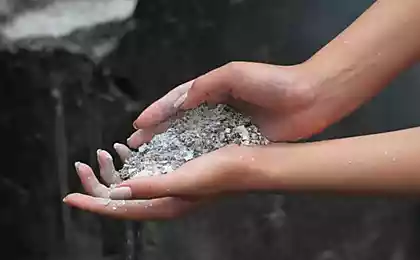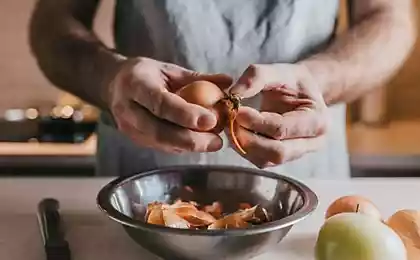137
“Buillon” method of feeding plants, after which they grow with renewed vigor
The topic of our article is the “broth” method of fertilizing houseplants. And no, we're not suggesting we use grandma's chicken broth for that. This means feeding flowers with a solution of mineral fertilizers.

Timely introduction of fertilization compensates for the shortcomings of the soil and guarantees the health of plants, but to follow the order of such work is quite tedious. And skipping them, we risk seeing green pets withered and sick.

Making fertilizing, using our method, is simpler. Plants always receive the right amount of fertilizers and are generously grateful for the care of regular and abundant flowering.
Feeding plants with a solution One of the most important elements for indoor plants is nitrogen. Its lack of soil is usually indicated by poor development and pale green color of the leaves.

Delayed flowering, weak root system and small flowers indicate a lack of phosphorus. Insufficient amount of potassium leads to the appearance of spots on the leaves and edge deformation.
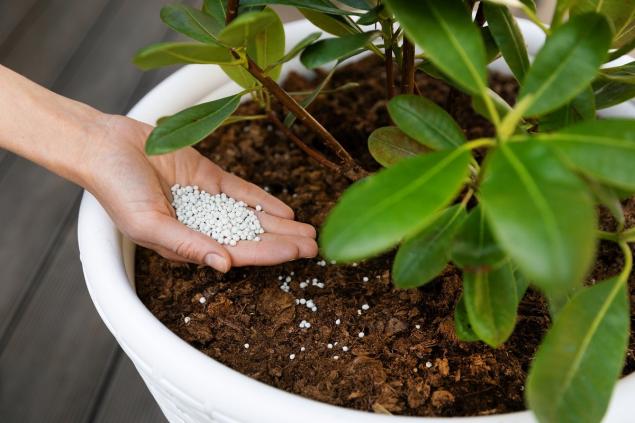
In addition, flowering plants need small amounts of magnesium, iron, sulfur. Therefore, buying in the store fertilizing for flowers, it is better to choose one that is enriched with trace elements.
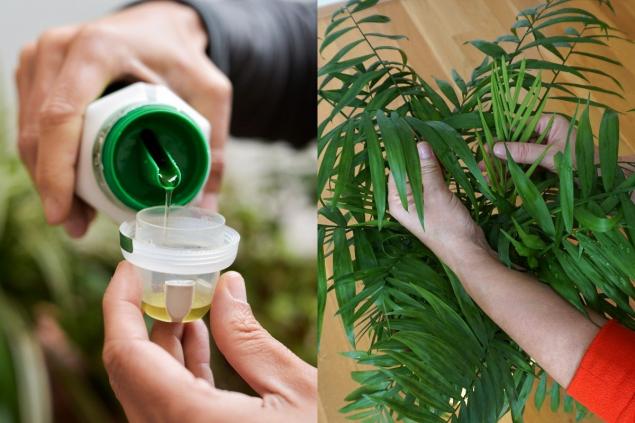
I used to do fertilizing on schedule. Now I make it simpler: I look in the instructions how much fertilizer is needed per month, divide this dose by the number of irrigations and breed in the water I use for irrigation.

It turns out that I make fertilizing in small doses, but regularly. Plants have time to absorb them and never face either a lack or an excess of nutrients in the soil.
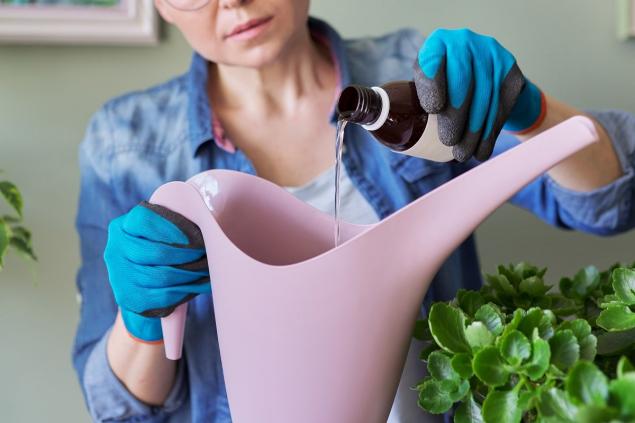
Let me remind you that earlier we told how to replace ready-made products with natural remedies that will replace new-fangled drugs and facilitate the care of plants. And their action is much more effective!

Timely introduction of fertilization compensates for the shortcomings of the soil and guarantees the health of plants, but to follow the order of such work is quite tedious. And skipping them, we risk seeing green pets withered and sick.

Making fertilizing, using our method, is simpler. Plants always receive the right amount of fertilizers and are generously grateful for the care of regular and abundant flowering.
Feeding plants with a solution One of the most important elements for indoor plants is nitrogen. Its lack of soil is usually indicated by poor development and pale green color of the leaves.

Delayed flowering, weak root system and small flowers indicate a lack of phosphorus. Insufficient amount of potassium leads to the appearance of spots on the leaves and edge deformation.

In addition, flowering plants need small amounts of magnesium, iron, sulfur. Therefore, buying in the store fertilizing for flowers, it is better to choose one that is enriched with trace elements.

I used to do fertilizing on schedule. Now I make it simpler: I look in the instructions how much fertilizer is needed per month, divide this dose by the number of irrigations and breed in the water I use for irrigation.

It turns out that I make fertilizing in small doses, but regularly. Plants have time to absorb them and never face either a lack or an excess of nutrients in the soil.

Let me remind you that earlier we told how to replace ready-made products with natural remedies that will replace new-fangled drugs and facilitate the care of plants. And their action is much more effective!
The cake for which the husband gets up at night and eats everything with milk
What did the wife, finding the correspondence flew to heaven husband with his mistress












